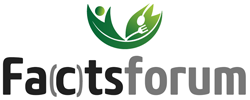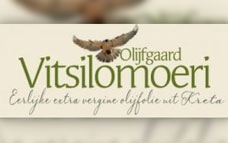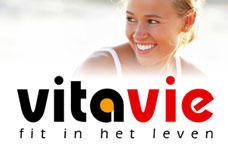Synthetic “folic acid” is a chemical that is not normally found in foods or the human body. It can be converted into usable forms of folate, but this conversion is limited to about 200 mcg per single dose in healthy volunteers;52 it may be even more limited during long-term exposure or in certain people. Synthetic “folic acid” does not cross the placenta; folate crosses the placenta as the naturally occurring 5-methyl-tetrahydrofolate.50 Since the synthetic supplements do prevent neural tube defects, pregnant women should use them if they are not going to eat folate-rich diets; whenever possible, however, it is best to meet the folate requirement from foods. Folate-rich foods include liver, legumes, and greens (see Figure 5 and Figure 7).
FIGURE 5. MEETING THE DAILY FOLATE REQUIREMENT
The folate requirement for pregnancy can be met by one of any of the following (volume after cooking):
Chicken liver 3.7 ounces
Calf’s liver 2.8 – 6.4 ounces
Beef liver 8.2 ounces
Lentils 1.7 cups
Other legumes 2.0-3.0 cups
Spinach 2.3 cups
Asparagus 2.3 cups
Beets 4.4 cups
Most greens 3.0-6.0 cups
FIGURE 7. FOLATE- AND CHOLINE-RICH MEALS AND SNACKS
Any combination of three meals and one snack and most combinations of three meals will exceed the pregnancy RDA for both nutrients. Folate from raw milk is accompanied by a protein that doubles its absorption. Absorption of folate from food in general is dependent on zinc status. High-quality grass-fed milk may be three to five times richer in choline.
Food Folate
mcg (% RDA) Choline
mg (% RDA)
3 eggs 71 378
2 pieces ww toast 43 24
8 ounces milk 12 35
Total 126 (21%) 437 (97%)
1/4 cup dry lentils 80 23
1/2 cup chop onion 15 5
1 medium carrot 12 5
1/2 cup broccoli 84 31
Stock ~ ~
8 ounces milk 12 35
Total 203 (34%) 99 (22%)
100 g salmon 29 66
1 cup asparagus 268 47
1 potato 14 23
8 ounces milk 12 35
Total 323 (54%) 171 (38%)
100 g beef liver 253 426
3 ounces bacon ~ 35
1 cup onion 30 10
1 potato 14 23
8 ounces milk 12 35
Total 309 (52%) 529 (117%)
Gluten-Free Casein-Free (GFCF)
Food Folate
mcg (%RDA) Choline
mg (% RDA)
3 eggs (omelet) 71 378
1/2 cup onion 15 5
1/2 cup tomato 14 6
1/2 cup broccoli 84 31
4 ounces bacon ~ 47
1 potato 14 23
Total 198 (33%) 490 (109%)
100 g chicken liver 560 327
1/2 cup cooked brown rice 4 9
1 cup cooked spinach 263 36
Total 827 (138%) 372 (83%)
SNACKS
1/2 cup crispy almonds 23 (4%) 36 (8%)
1/2 cup hulled sunflower seeds 159 (27%) 77 (17%)
SMOOTHIE
3 egg yolks 75 348
1 banana 24 12
8 ounces milk 12 35
Total 111 (19%) 395 (88%)
VITAMIN A AND BIRTH DEFECTS
The claim that intakes of vitamin A over 10,000 IU per day can increase the risk of birth defects can be traced back to a 1995 paper published by a group of researchers led by Dr. Kenneth Rothman of Boston University.21 The researchers followed almost 23,000 women over the course of their pregnancies and found that women who consumed more than 10,000 IU of vitamin A during the first trimester gave birth to offspring with a 2.4-fold greater risk of total birth defects and a 4.8-fold greater risk of cranial-neural-crest defects (a rather broad group of defects whose classification is controversial). Among the 188 women who consumed this amount of vitamin A from “food” alone, there was an 80 percent increase in the risk of total birth defects and two times the risk of cranial-neural-crest defects. Because there were so few women consuming vitamin A from “food” alone, however, the researchers could not conclusively distinguish the association from the effect of chance.
This study has a number of important flaws. Most of the vitamin A came from multivitamins. The authors did not distinguish between various food sources—and most “food” vitamin A comes from fortified breakfast cereals. Three groups of experts wrote to the journal questioning the authors’ classification of cranial-neural-crest defects.22,23,24 Perhaps most important, the authors may have underestimated the rate of certain types of birth defects. The rate of total birth defects among the 20,000 women consuming less than 10,000 IU was only 1.5 percent; by contrast, the generally accepted background rate is 3-4 percent. The rate of defects among the 3,000 women consuming more than 10,000 IU of vitamin A was 3 percent—on the lower end of normal.24
The most important objection to this study is the fact that it conflicts with all the other evidence:
An earlier 1990 study conducted in Spain found that among 25,000 births, doses of vitamin A over 40,000 IU per day carried a 2.7-fold higher risk of birth defects, but doses of vitamin A up to 20,000 IU or between 20,000 and 40,000 IU both carried a 50 percent lower risk of birth defects compared to no supplementation.25
A 1996 study of 522,601 births found that the children of women supplementing with at least 10,000 IU of vitamin A in addition to a multivitamin had a lower risk of birth defects than those of women who did not supplement, although the association could not be distinguished from the effect of chance.26
A 1997 study of 1,508 births found no relationship between birth defects and use of vitamin A supplements, fortified breakfast cereals, organ meats or liver.27
A 1999 prospective study of 311 mothers who consumed between 10,000 and 300,000 IU of vitamin A in the first trimester and a similarly sized group that did not supplement with vitamin A found no evidence of an increased risk of major malformations with increasing dose. The median dose was 50,000 IU. The group as a whole had a 50 percent lower risk of major malformations than those who did not supplement, and there were no major malformations in offspring born to mothers consuming more than 50,000 IU.
The preponderance of the evidence clearly favors the view that 20,000-25,000 IU of vitamin A during pregnancy is safe and may even reduce the risk of birth defects.63
http://www.westonaprice.org/health-topics/vitamins-for-fetal-development-conception-to-birth/
Mike






